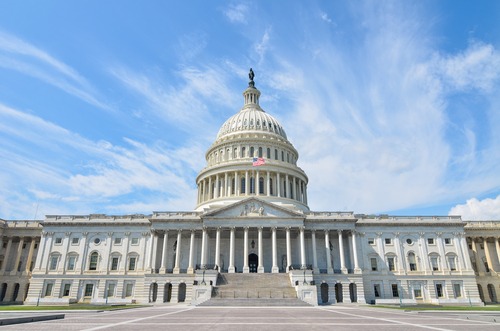Bipartisan Bill to Expand Financing Options for Energy Projects in Congress
Key Ideas
- The Financing Our Energy Future Act aims to extend the master limited partnerships (MLPs) tax structure to renewable energy projects, including hydrogen, to level the playing field for all energy sources.
- Sponsored by U.S. Sen. Jerry Moran and cosponsored by U.S. Sen. Christopher Coons, the bill seeks to increase U.S. energy production, spur innovation, create jobs, and reduce consumer energy prices.
- Support for the bill has been expressed by various groups, including the Nuclear Innovation Alliance, the Energy Infrastructure Council, the American Clean Power Association, and others, highlighting the potential benefits for American energy projects and the economy.
- The bipartisan legislation has been referred to the U.S. Senate Finance Committee for consideration as a step towards expanding financing options for a wide range of energy infrastructure projects.
A recent bill introduced in Congress, the Financing Our Energy Future Act (S. 510), proposes to expand certain financing tools to include all types of energy resources and infrastructure projects. Currently, master limited partnerships (MLPs), a tax structure limited to traditional energy projects, may soon be accessible to renewable energy sources like hydrogen, advanced nuclear, sustainable aviation fuel (SAF), biodiesel, and biomass. The bill, introduced by U.S. Sen. Jerry Moran and cosponsored by U.S. Sen. Christopher Coons, aims to provide renewable energy companies with access to tax incentives to boost U.S. energy production, foster innovation, and lower consumer prices.
The bill would amend the Internal Revenue Code to enable renewable energy power generation projects to operate as MLPs, opening up new investment avenues. Various groups, including the Nuclear Innovation Alliance, the Energy Infrastructure Council, and the American Clean Power Association, have shown support for the bipartisan legislation, emphasizing the positive impact on advanced nuclear energy, job creation, competitiveness, and the American energy economy. By expanding the MLP structure to include emerging energy sources, the bill seeks to facilitate the development of critical energy infrastructure. The proposed legislation has been referred to the U.S. Senate Finance Committee for further evaluation, representing a significant move towards enhancing financing options for diverse energy projects in the country.
Topics
Policy
Renewable Energy
Investment
Energy Infrastructure
Financing
Legislation
Tax Incentives
Bipartisan
American Economy
Latest News
